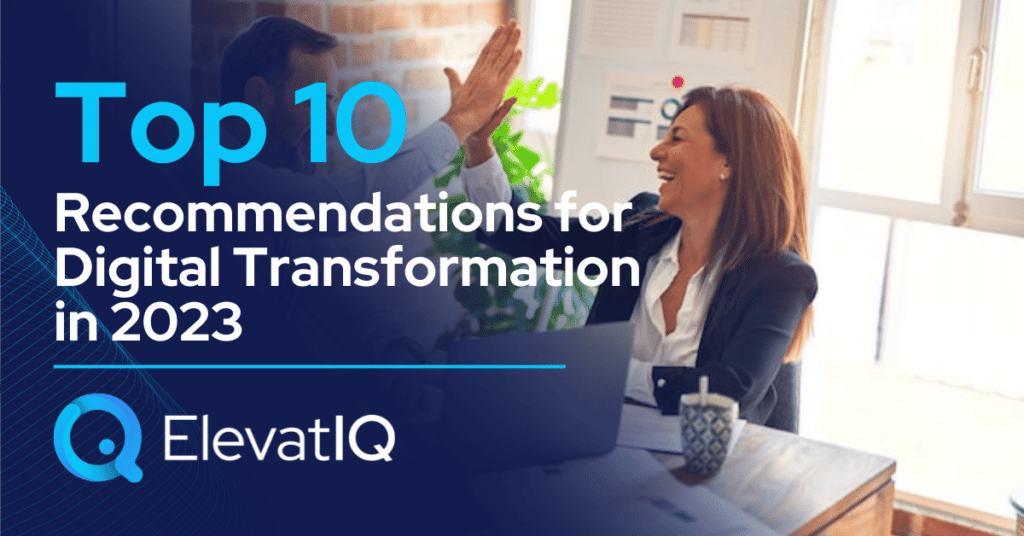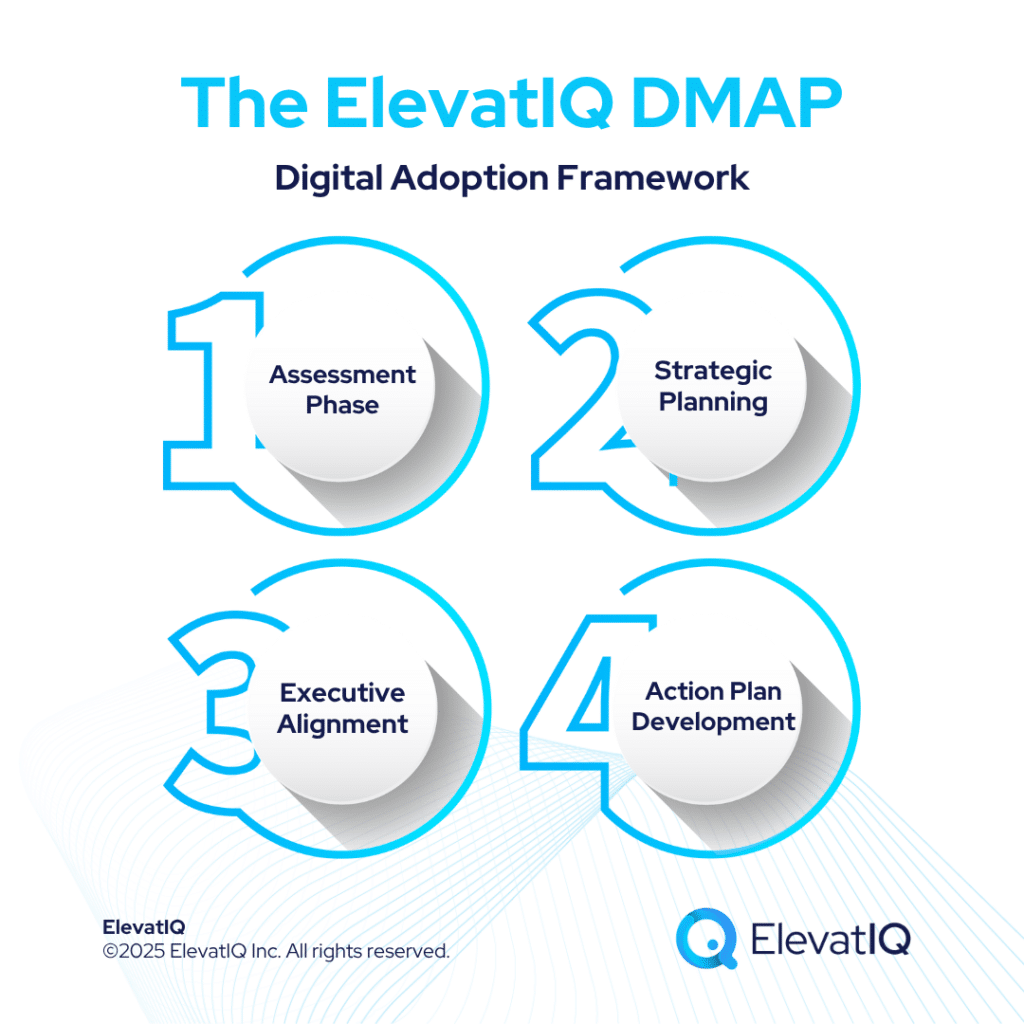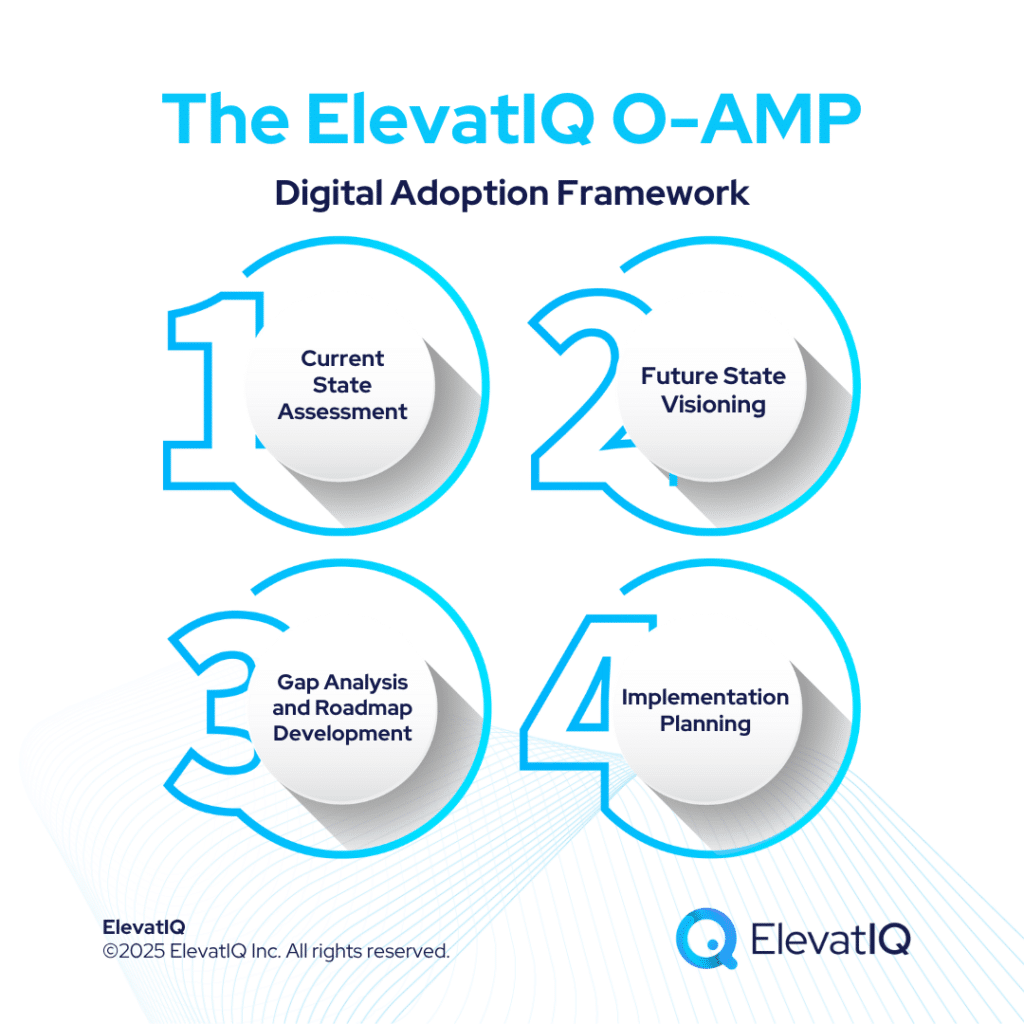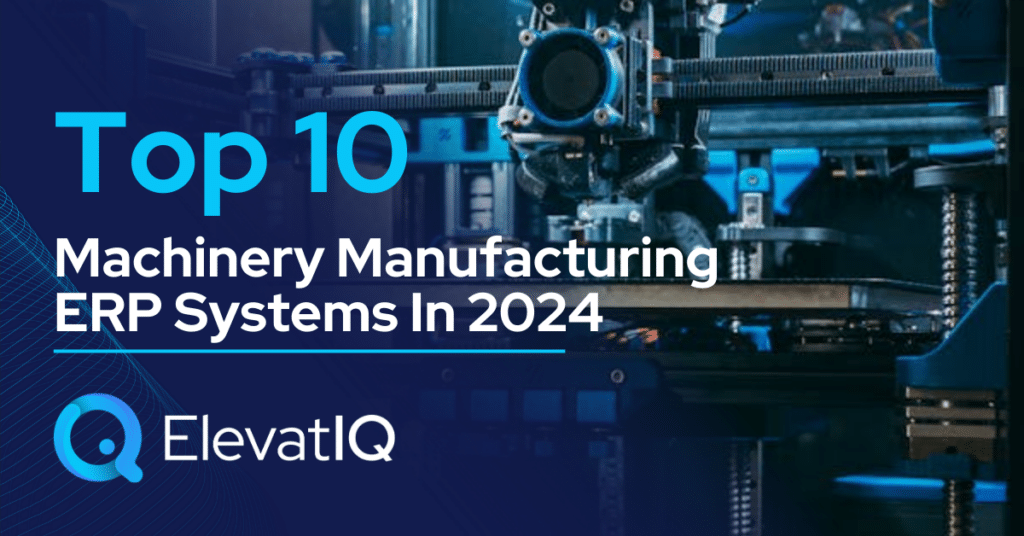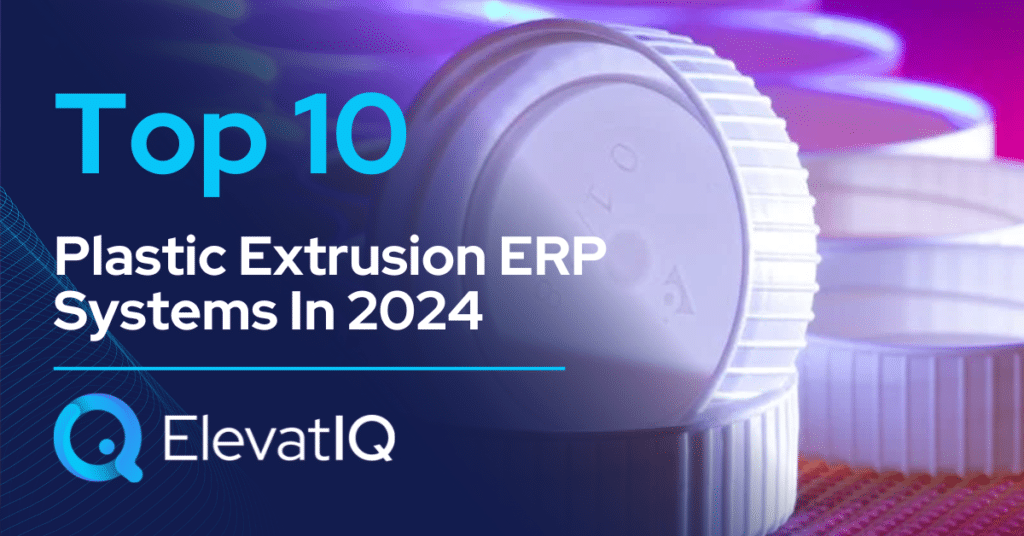Last Updated on March 10, 2024 by Sam Gupta
Who would not like to find the “secret” recommendations for digital transformation? Unfortunately, with enterprise-wide transformation projects, there is no checklist that can be followed. These projects require careful preparation and alignment of several areas. And they all, collectively, drive the success of your digital transformation projects.
Also, with enterprise transformation projects, technology alone can’t solve business issues for you. You will need to align the compensation structure along with KPIs and enterprise architecture. Also, even if you have invested in substantial efforts with your pre-selection and business process reengineering, things might fall off during the implementation phase unless you have controls in place for code, master data, and architecture review (and compliance).
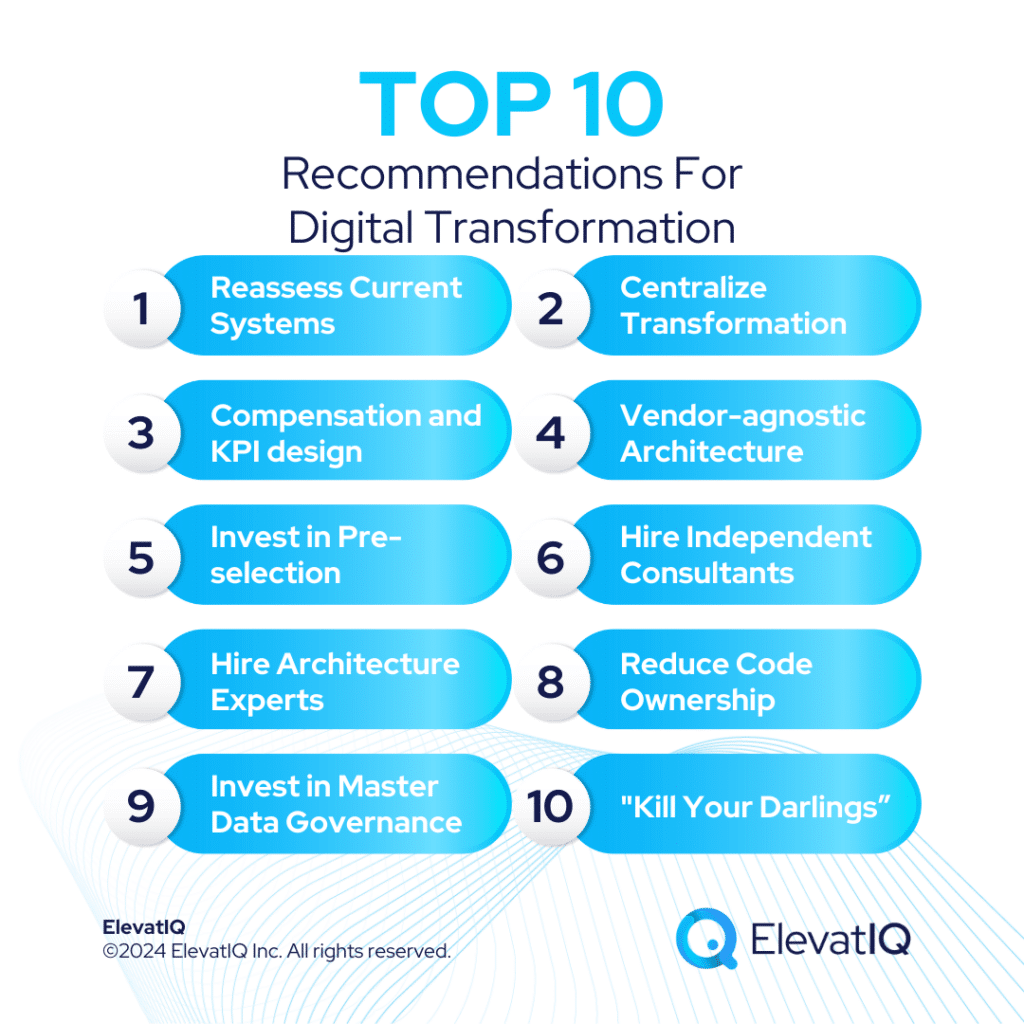
Finally, most departments typically try to pull the architecture in their direction. This often results in the “loudest” departments being more represented in the architecture. Implications? Both overengineering and under-engineering issues will cause a disjointed experience for users. And they might end up with siloed applications or spreadsheets – defeating the overarching purpose of transformation initiatives. Following these recommendations for digital transformation will set you up for a successful transformation project.

1. Reassess Your Current Architecture and Systems
People often forget that your architecture is more important with enterprise-grade transformations than the technologies used. While it might appear promising at the surface, new software very rarely would solve your business problems. But why? Because unless there is a clear alignment in current gaps and process changes, the new system might not be as effective. It might even cause disruptions to your current operational processes if not planned well.
Your chances of success will be higher if you redefine a vendor-agnostic architecture tailored to current operational limitations. First, improvement opportunities with the current architecture were identified. Then, only if it makes sense, replace a system where it’s a clear misfit based on your business model and growth ambitions. Assessing your architecture requires deep subject matter expertise with your systems, processes, and data – in order to perform an informed assessment. This assessment helps understand if the changes would make sense for your architecture (and at the stage of your business).
2. Centralized Transformation, Change, and Budget Management
Due to the lack of perceived short-term benefits (and risks for business process leaders), enterprise transformation initiatives typically take the backseat. So what’s the solution? Form a centralized digital transformation team and allocate a corporate budget for enterprise-wide transformation.
What else? Identify change opportunities that impact your current systems and processes. Manage them centrally. And Define the blueprint for each changeset and assess its impact. Anything else? Yes, prioritize them and design phases including release strategy, And then execute them based on feasibility. Recommendations for digital transformation such as this help your vision take the front seat and resolve conflicts easily.
3. Compensation and KPI design
Have KPIs that are not only departmental. However, they should be aligned with the strategic priorities as well. Most corporations focus on short-term results. And that comes at the expense of the lack of interest in long-term strategic investment and initiatives such as enterprise-wide transformation.
Impact of the short-term mindset? It results in duplicated efforts across departments and information silos. These silos are typically counterproductive for the overall success and financial health of the organization.
4. Don’t Ask Your Technology Vendors to Define Your Enterprise Architecture
Your enterprise architecture is essentially your business model. While technology vendors such as SAP or Oracle and their resellers might provide great technical capabilities, they are experts at tools in their portfolio. Their role should be limited to defining system architecture once the other architecture has been well-defined.
So, what are these other architectural pieces? Business, process, and data architecture. And they all must be designed in a technology- and vendor-agnostic fashion. Who can help with this design? Qualified consultants with multi-system and multi-ERP expertise are better positioned to offer recommendations for digital transformation architectural components and their interactions.
5. Invest in Pre-selection Phase
The software development lifecycle requires you to go through the four critical phases of software implementation. Namely, requirement, design, test, and implementation. While buying enterprise software can save you a ton of effort and risk, these phases are equally relevant even for enterprise software implementation. Sometimes, even more so.

The pre-selection phase identifies requirements and process states. It also provides visibility into the as-is and to-be workflows for each department. Then it helps focus on the right critical success factors along with identifying gaps and development efforts required.
6. Get help from Independent ERP and Digital Transformation Consultants
Most executives go through 3-5 digital transformation initiatives in their careers. So designing the state of the system and processes based on this limited experience would not provide enough data and sample size to learn the architectural best practices. And forecast the possibility of each decision.
The independent ERP and digital transformation consultants work with many different businesses. And they have already seen the mistakes that you are likely to make with your next transformation. Are consultants too expensive? Hire them at least to vet your plans and mentorship if you are on a tight budget.
7. Don’t Let Developers/IT Managers or Functional Subject Matter Experts Design the Architecture
Designing an enterprise system is similar to engineering functions in manufacturing. How so? The skill set that might be good with operational execution might not be the best for strategic and engineering design. Also, the developers and IT managers typically don’t have the visibility and business background to be able to negotiate process changes with functional stakeholders.

The same applies to functional leaders. While they might know a lot from the business perspective, the technical perspective is equally important in assessing performance and process issues due to poorly coded and integrated processes. You need someone who has a deep background in designing enterprise-grade systems, along with deep business expertise and education.
8. Try to Reduce the Amount of Code You Own
With custom software, you might own 100% of the code, whereas with an ERP implementation, you might own roughly 30%. This might include any customizations, home-grown integrations, or proprietary systems. While software development might appear cheaper on its surface, owning and maintaining code over time requires economies of scale. So unless the custom code is part of your commercial offering, owning it will always be more expensive.
So are there any components that are better suited for internal ownership? Yes, the components that change frequently such as EDI integration. Or the ones that may require substantial manual inputs from business users during the processing of transactions. The rest of the components can easily be bought at a much cheaper price from enterprise software vendors.
9. Invest in Master Data Governance
Most organizations end up reimplementing the same ERP system at least 2-3 times even within 5-10 years of the upgrade cycle. Most times it’s the mismanagement of master data that is the culprit. Poor master data management often leads to ad-hoc processes, adoption issues, and the need for external systems.
The successful management of master data requires clearly defined roles and responsibilities for each system. And functions controlling the data and its interaction flow. It also requires forming a centralized function responsible for designing and maintaining master data compliance.
10. Be ready to “Kill Your Darlings”
Fragmented and siloed operations often result in proprietary applications. These applications might make sense in a siloed and fragmented architecture. But not in the context of enterprise architecture.

The legacy and proprietary applications might drive the customizations and additional unnecessary integration flows to accommodate their shortcomings. It might be cheaper to replace these proprietary systems and use components that might be pre-integrated with the new solution.
Final Words
There are no secrets to digital transformation. It’s the structured approach along with the alignment that makes or breaks ERP implementation. With the increased number of channels driven by customer experience, the importance of architecture can’t be underestimated.
The digital transformation initiatives were never meant to be this difficult. But they do require expertise and thoughtful execution. Also, cultural and process changes have a direct impact on digital transformation initiatives. By following these recommendations, you will be set up for success with your digital transformation initiatives.


